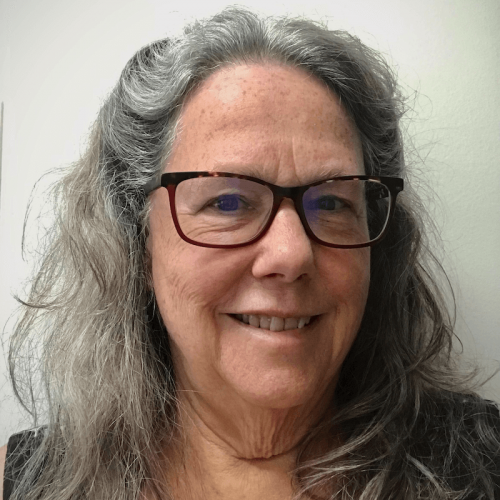Art Spark TX Radio Hour co-host Celia Hughes and I spoke on August 28.
Michael A. Brown: At the KOOP website, the show’s tag line is “information and advocacy by and for the disability community.” What are that community’s unique needs and interests that art and the show address?
Celia Hughes: People with disabilities are often invisible in our society. We have found that one of the ways they are successful in advocating and telling their stories is through art, such as by making art, or through writing or performance, or any other creative endeavor. The arts reduce the barriers that disabled people face in society, or at least offer creative workarounds to the barriers. Arts offer multiple ways to express one’s self. That’s what we cover on the show. Also, I have found in working with people with disabilities for a long time that the creativity enables good, long-lasting relationships to develop.
MAB: What are the most common and significant obstacles to disabled people enjoying art or even creating art?
CH: The most obvious is not being able to get in the door of a museum or a theater. Some people can’t turn the knob or push the bar to open the door because of hand limitations. Or if the door has a one-step entrance. For people in wheelchairs, one-inch is a barrier. Besides those barriers, there are obstacles like not being on a bus route, inaccessible parking, and inaccessible rest rooms. There is flourescent lighting, which can trigger seizures in folks with seizure disorders. And although the Americans with Disabilities Act (ADA) remedies some of those physical things, there also are attitudinal barriers, such as “you don’t belong here” or “you’re welcome here but there are no special accommodations.” There sometimes is fear or meanness when a person appears to have a cognitive disability or mental illness. We saw an example of that during the recent political convention where a candidate’s son with a non-verbal learning disability was made fun of by the opposition party.
MAB: Talk about your show format and the sorts of topics you, co-host April Sullivan, and your guests discuss.
CH: We start out with a point of view, which is a one- or two-minute discussion of a current news story about disabilities and/or art. We do that both to establish the discussion topic with our guest and to get our conversation started. Then we transition to our interview, which usually is with one guest. Our guests typically are people with disabilities who are doing interesting things or who are working with us on a particular project. We also host non-disabled people who are connected to disabilities through the work they do. We focus on their relationship to the intro article, and if they have published a book or produced a film, of course we ask about that. We always feature an Artist of the Month, and then finish with a song related to the topic of the day.
MAB: The show web page also says you “challenge perceptions of how people contribute by creating an arts-inspired, inclusive community of individuals with and without disabilities.” Give us an example please.
CH: We try to build community in whatever art form we’re working with. A very visible one is our Body Shift Collective dance community, which was started by two women with cerebral palsy who had been in our acting company before then. Members of the group wrote their personal narratives and then we crafted them into dance performances. Through our work, we bring together people who have never known each other but may have a disability, are close to someone with a disability, or are just interested in learning something new, and that’s what we mean by creating a community.
MAB: Please share a couple stories of memorable show episodes and guests.
CH: For the last two SXSW, we’ve been able to bring on guests that we never would have been exposed to without South By. Scanning the event lineups, we’ve been able to identify presenters and artists with disabilities. We have hosted a young writer from Australia, a film-maker, and a 17-year-old musician who has muscular dystrophy. We recorded some of the interviews on-site at SXSW and some guests came to KOOP. We’ve had several folks from the Coalition for Texans with Disabilities … writers, actors, musicians and others. All our shows are memorable!
MAB: Art Spark Texas is not only your KOOP show, it also is an organization. Tell us about it please, along with the website URL.
CH: Art Spark started in 1996, founded by two people who are blind. We provide verbal description, which is spoken translation of visual information. That remains one of our primary services. We do it live at theaters and events around town. We do a lot with technology, such as graphic design, marrying traditional art with digital art. And since 2009 we’ve had a veterans’ program. We had a veteran in a show and both my parents were World War II vets, so we recognized a need and opportunity to engage the veteran community through art. We brought in local veterans’ service organizations and together we launched annual veterans’ art exhibits that are now in their 16th year! If you’re disabled or close to someone who is, and like art or think you or they might like art, we will welcome you! You can learn more at the web site, www.ArtSparkTX.org.
You can hear the Art Spark Texas Radio Hour every Monday at 2pm.
Interview by Michael A. Brown
